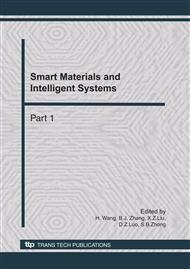p.787
p.792
p.797
p.802
p.806
p.813
p.819
p.824
p.828
Optimization of Laser Cladding Forming Parameters by Numerical Simulation to Minimize the Cracking Posibilitys
Abstract:
Laser cladding forming (LCF) is one of the new developed advanced manufacturing technologies. It integrates the advantages of rapid prototyping manufacturing and laser cladding surface modification, and three dimensional near-net-shape metal components can be directly manufactured without dies. Due to the dramatic heating and cooling characteristics of laser cladding forming process, the cladding layers is liable to crack, which greatly impedes the further and wider application of this technology. In this paper, numerical simulation on the three-dimensional transient temperature field and stress field of powder-delivery LCF has been carried out with parametric programming methods. The temperature field, temperature gradient and cooling rate of the laser cladding layer have been obtained. The influences of laser power and scanning speed on the temperature gradient and cooling rate of the cladding layers, especially the cooling rate of solid-liquid interface of the melt pool have been studied, which is tightly correlated with the cracking generation of the deposited layers. According to the simulation, process parameters were optimized to minimize the cracking possibility; LCF experiments have also been conducted to verify the simulation results.
Info:
Periodical:
Pages:
806-812
Citation:
Online since:
October 2010
Authors:
Price:
Сopyright:
© 2011 Trans Tech Publications Ltd. All Rights Reserved
Share:
Citation:


